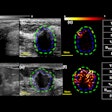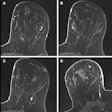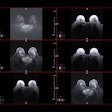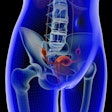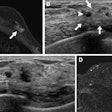A 2019 Missouri law that expanded mammography coverage led to a 45% increase in breast cancer screening among Medicaid patients -- and also boosted the use of digital breast tomosynthesis for it, according to a Harvey L. Neiman Health Policy Institute (HPI) study.
The research outlined the effects of the legislation, which mandated coverage for annual screening mammography beginning at age 40 and allowed for digital breast tomosynthesis (DBT) as well as full-field digital mammography. It was published July 24 in the Journal of the American College of Radiology.
"Among women in Missouri, we found that those with Medicaid insurance were 45% more likely to have screening mammography after the law change compared with women insured through Medicare Advantage," said senior author Eric Christensen, PhD, of HPI, in a statement released by the journal.
Before the widespread use of DBT, many states had language in breast cancer screening legislation that only allowed insurers to cover full-field digital mammography. Missouri's expanded coverage law was passed in 2018 and took effect in January 2019. To explore the effects of this legislation on mammography uptake and specifically the use of DBT, a team led by Amy Patel, MD, conducted a study to explore the effects of this legislation on mammography uptake and specifically the use of DBT. Patel is director of the Breast Care Center at Liberty Hospital in Liberty, MO, and chair of the American College of Radiology's (ACR) Radiology Advocacy Network/RADPAC.
The group's work included data from more than one million women taken from a national claims database (Inovalon Insights), and compared women under the law's jurisdiction to those unimpacted by it. The researchers used logistic regression models to evaluate any associations of changes in the Missouri law with women's likelihood of screening, and for those screened, the likelihood of receiving DBT; they also compared Missouri patients to their counterparts in Missouri border states without a similar law.
The team reported the following:
- After the law change, Medicaid-insured women were 45% more likely to receive screening mammography compared with those with Medicare Advantage.
- Medicaid-insured women were 9% more likely to get screened than Medicaid patients in neighboring states without similar legislation.
- Medicaid-insured women's rate of DBT usage increased by 64% compared with border states.
- Commercially insured women in Missouri saw a 24% increase in DBT use following the legislation, and were 5% more likely to be screened compared with Medicare Advantage patients.
The study findings provide "compelling evidence that legislative policy can increase breast cancer screening and adoption of DBT, particularly for Medicaid patients," wrote Derek Nguyen, MD, of Duke University School of Medicine in Durham, NC, in an accompanying commentary.
"The Missouri law's impact on increasing DBT use among both Medicaid and commercial patients further highlights the importance of insurance mandates in advancing equitable care," Nguyen noted. "Although more research is needed to assess the long-term clinical benefits and cost-effectiveness of such policy changes, this work should encourage other states to consider similar reforms."
The complete study can be found here.













